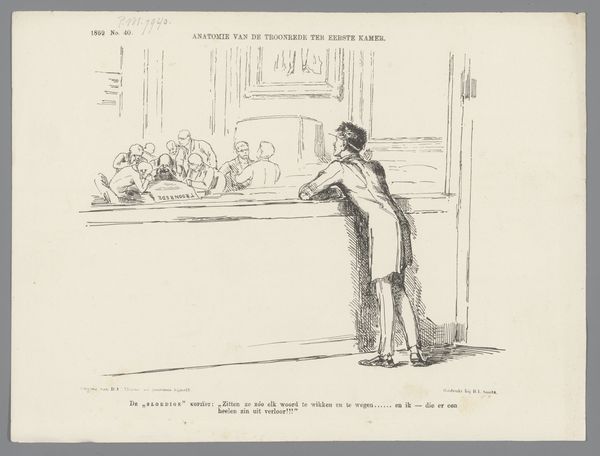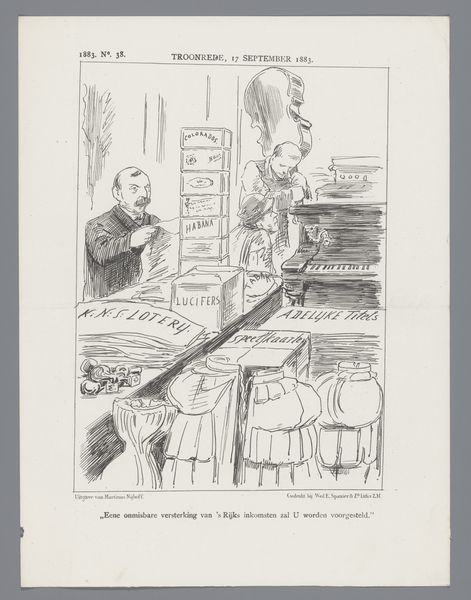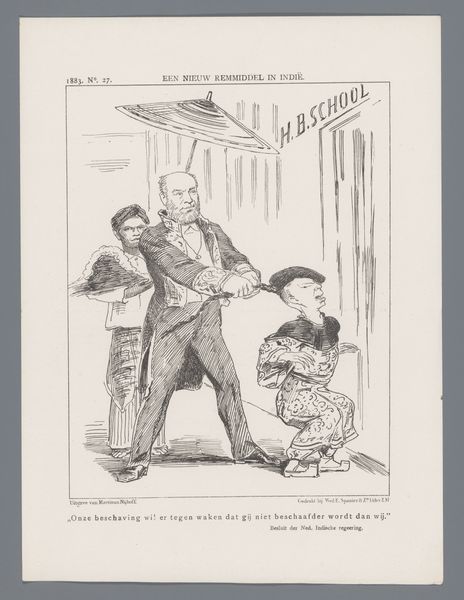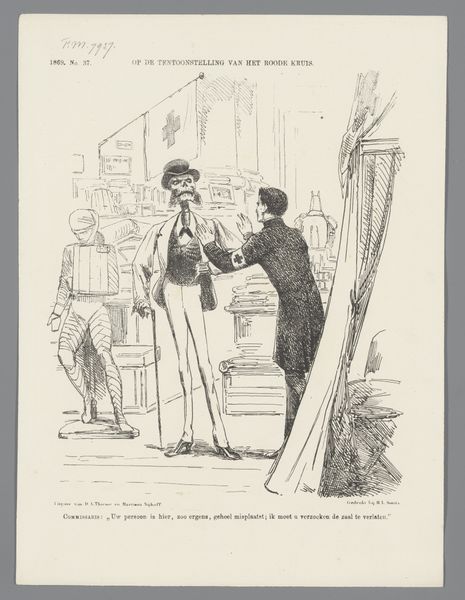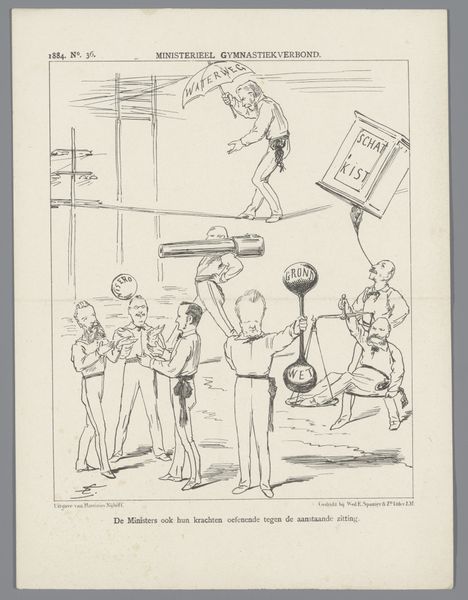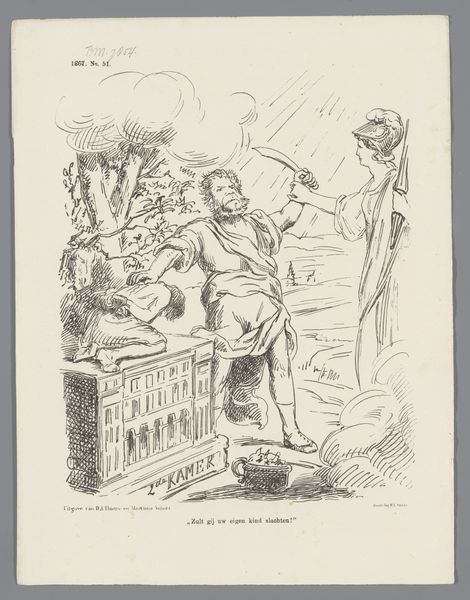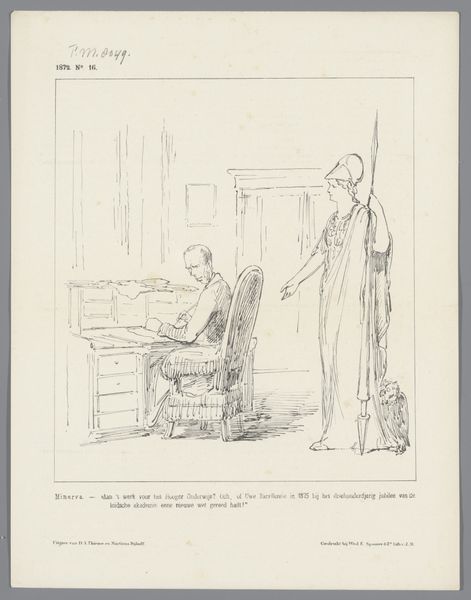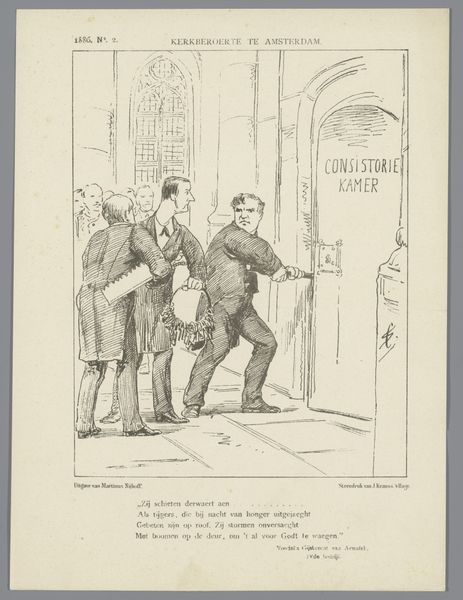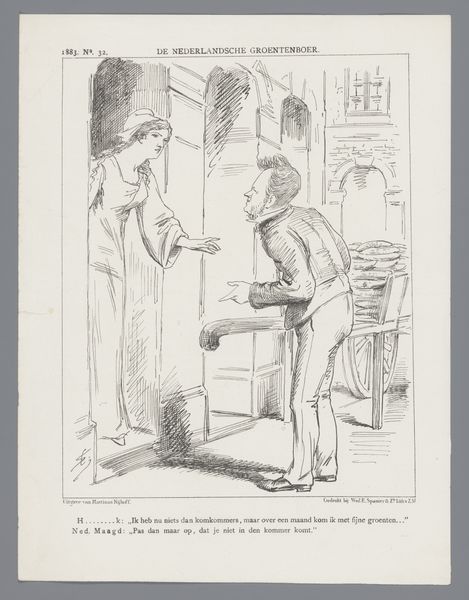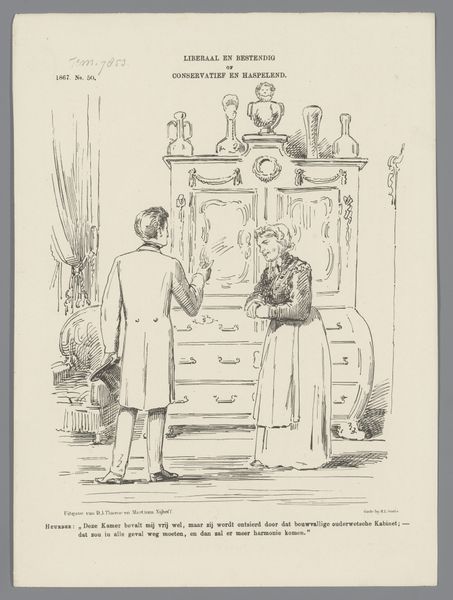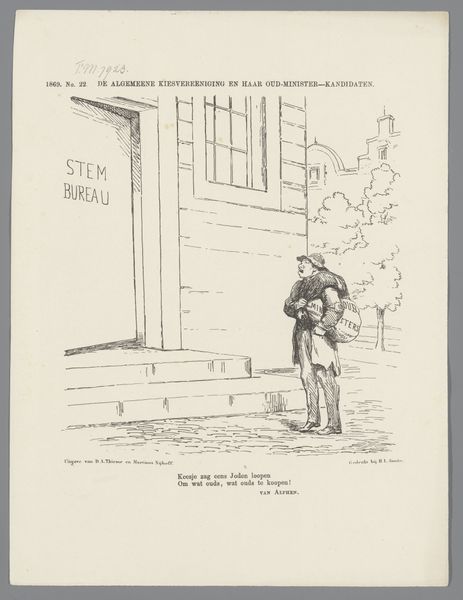
Dimensions: height 275 mm, width 215 mm
Copyright: Rijks Museum: Open Domain
Editor: This is "Spotprent over de Haagse bezuinigingen, 1885," a political cartoon by Johan Michaël Schmidt Crans made using pen and print. It depicts a soldier looking up at a stork perched atop a building. There's a sense of futility about the image...what do you make of it? Curator: Well, this print screams of social commentary. Crans critiques "De Haagse bezuinigingen," the austerity measures in The Hague at the time. The stork, often associated with the city and its government, appears dominant. It embodies the oppressor. Editor: So, the soldier symbolizes the working class being crushed by these policies? Curator: Exactly. Note his diminutive stature in comparison to the bird, his antiquated weaponry—or "Schutterlijke weerloosheid," as the print cleverly puts it—it all speaks to the power imbalance. What does the Dutch text tell us about this socio-political tension? Editor: It looks like the stork says they are saving money so the soldiers are assisted. And the soldier responds that he thinks it's fine if they hadn't helped, because the soldiers could have been sent home sooner. Curator: Precisely. This emphasizes the disconnection between those implementing the cuts and those affected. The text unveils the socio-economic anxieties present during that period. It hints at the class divisions and political dissatisfaction that fueled social unrest in 19th-century Netherlands. How might we connect these themes to current socio-political struggles? Editor: It seems timeless, this feeling of those in power making decisions that deeply impact the powerless. It’s a compelling reflection of history. Curator: It underscores how art serves as a potent tool for understanding and challenging power structures throughout history.
Comments
No comments
Be the first to comment and join the conversation on the ultimate creative platform.
